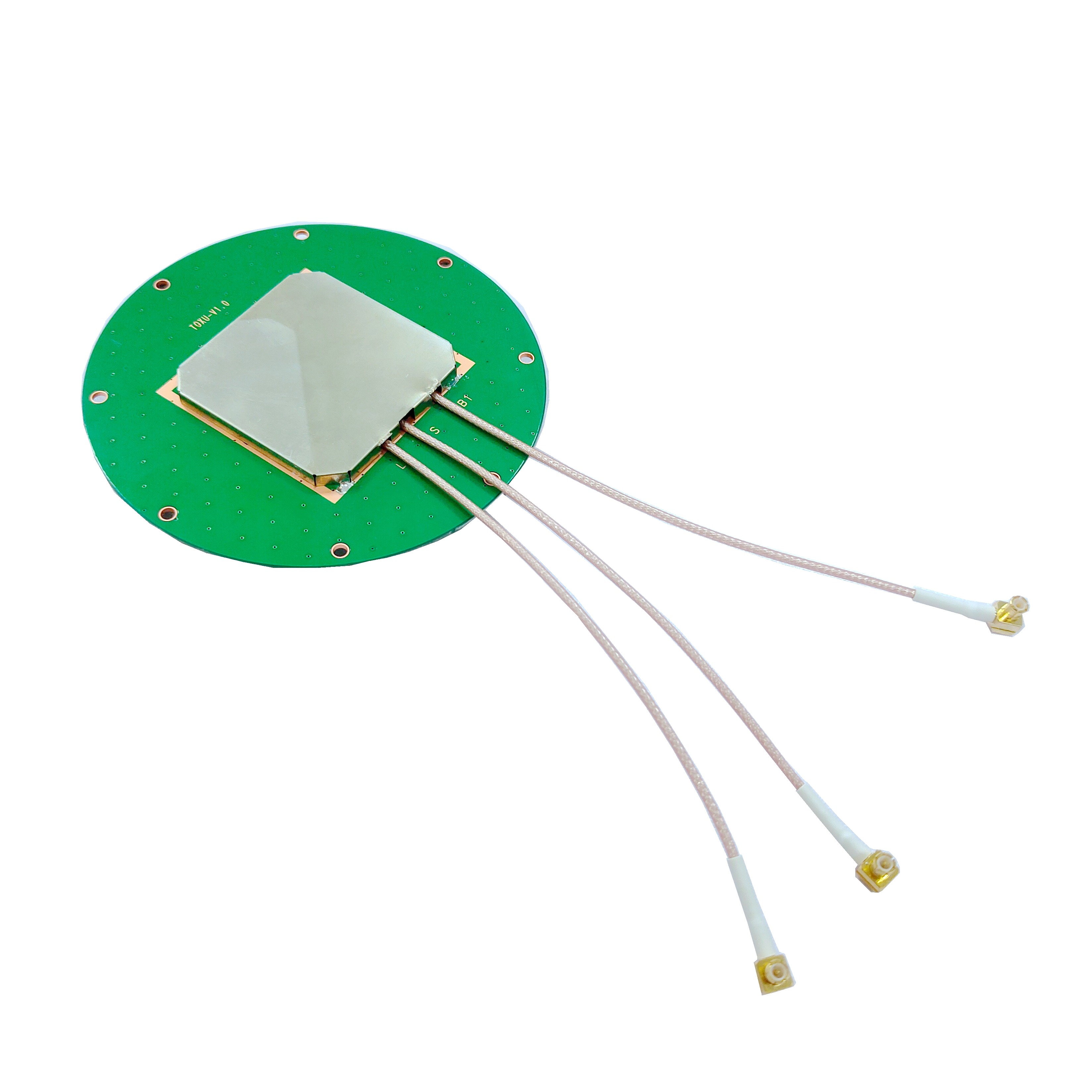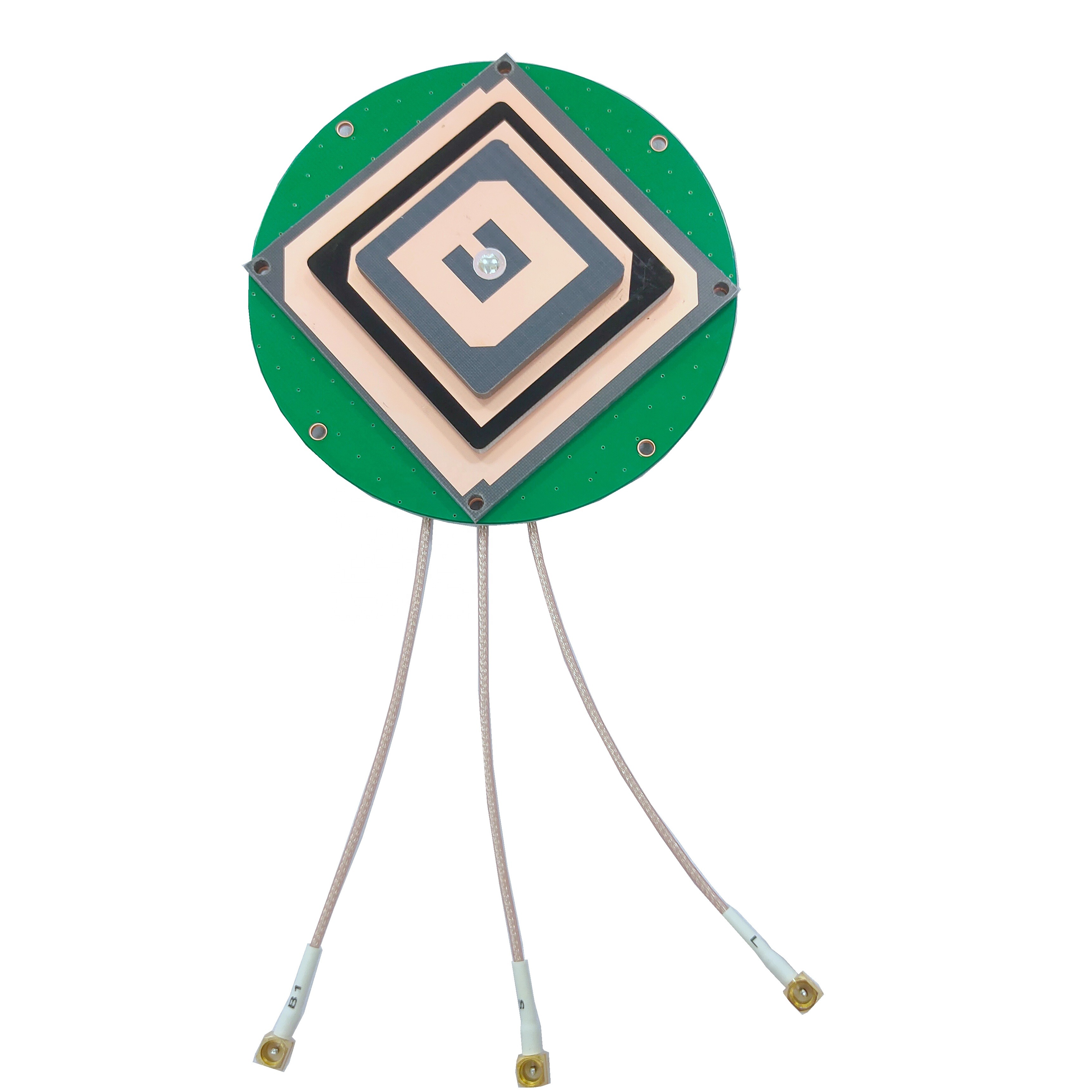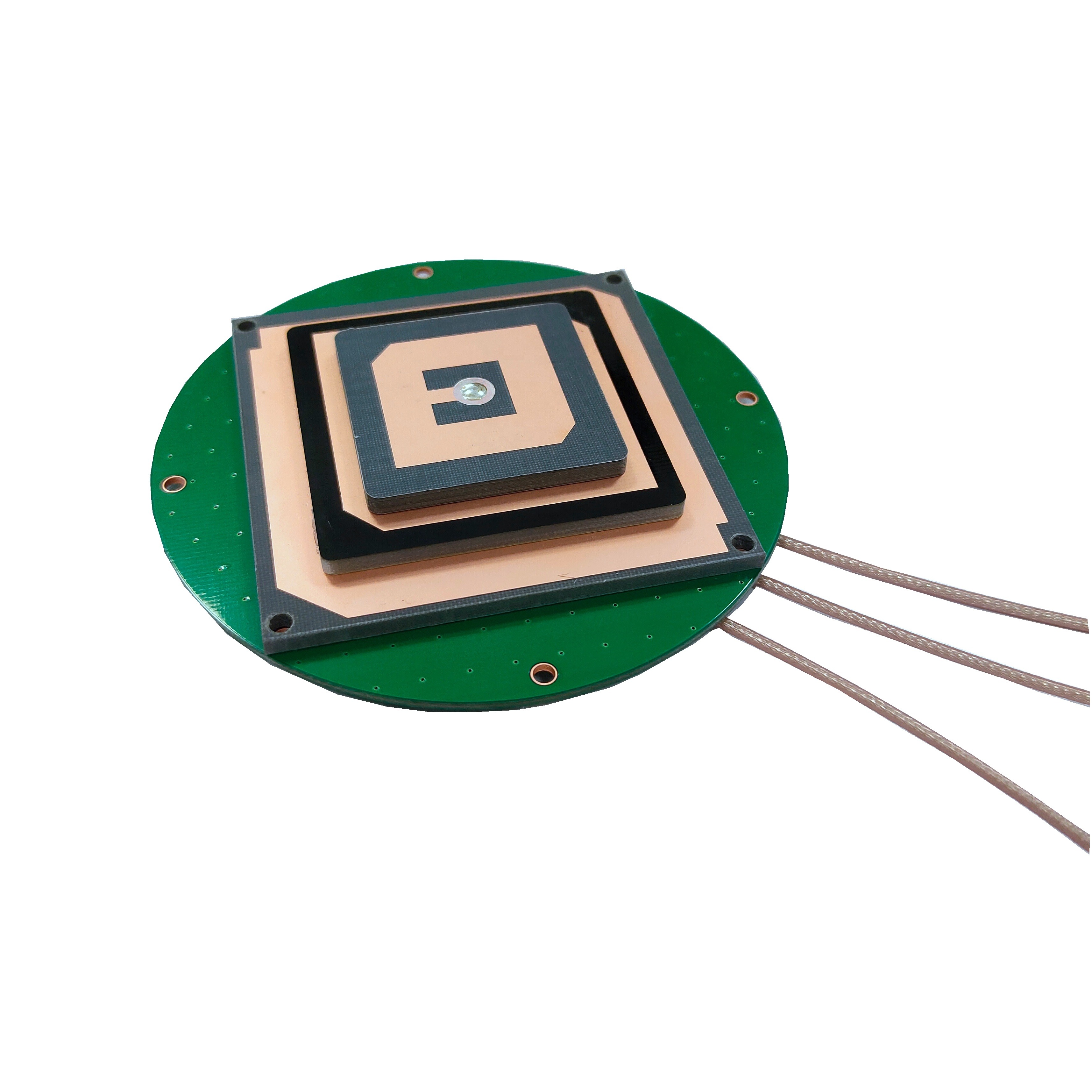ow-power embedded RTK GNSS antennas are engineered to operate within constrained environments, such as mobile devices, drones, and IoT sensors, where battery life and space are critical considerations. These antennas are designed to be highly sensitive, enabling them to capture weak satellite signals even in challenging conditions like urban canyons or dense foliage. Their low-power consumption ensures extended operational periods without frequent recharging, enhancing the reliability and usability of RTK GNSS-enabled devices.
The integration of advanced materials and manufacturing techniques has facilitated the miniaturization of these antennas without compromising performance. Modern low-power embedded RTK GNSS antennas leverage multi-band support, allowing them to receive signals from multiple GNSS constellations (GPS, GLONASS, Galileo, BeiDou) simultaneously, thereby improving accuracy and redundancy. Additionally, they incorporate sophisticated filtering and amplification mechanisms to mitigate interference and enhance signal quality, ensuring robust and reliable positioning data.
Design and Construction of Low-Power Embedded RTK GNSS Antenna
The design and construction of a low-power embedded RTK GNSS antenna are intricate processes that involve a deep understanding of electromagnetic theory, material science, and manufacturing technologies. The primary goal is to create a compact, lightweight, and durable antenna that can efficiently receive and process satellite signals while consuming minimal power.
Antenna Element Design: The core of the antenna is its radiating element, which is responsible for capturing satellite signals. This element is typically designed as a patch antenna or a helical antenna, depending on the frequency bands and form factor requirements. Patch antennas are popular for their low profile and ease of integration, while helical antennas offer omnidirectional reception capabilities, making them suitable for mobile applications.
Multi-Band Support: To achieve high accuracy and reliability, modern low-power embedded RTK GNSS antennas support multiple frequency bands. This is achieved through the use of multi-layer substrates or stacked patch elements, each tuned to a specific frequency band. The design must ensure minimal coupling between bands to prevent signal degradation.
Low-Noise Amplifiers (LNAs): To enhance the weak satellite signals, low-noise amplifiers are integrated into the antenna design. These LNAs are carefully selected for their low power consumption and high gain characteristics, ensuring that the received signals are amplified without introducing significant noise.
Filtering Mechanisms: Interference from other wireless signals can degrade the performance of GNSS antennas. To mitigate this, sophisticated filtering mechanisms, such as Surface Acoustic Wave (SAW) filters or Band-Pass Filters (BPFs), are incorporated into the design. These filters selectively allow GNSS signals to pass through while blocking unwanted frequencies.
Manufacturing Techniques: The construction of low-power embedded RTK GNSS antennas involves advanced manufacturing techniques such as printed circuit board (PCB) fabrication, microelectronics assembly, and encapsulation. These techniques ensure precise alignment of antenna elements, optimal electrical performance, and protection against environmental factors like moisture and dust.
Low-power embedded RTK GNSS antennas are engineered to operate within constrained environments, such as mobile devices, drones, and IoT sensors, where battery life and space are critical considerations. These antennas are designed to be highly sensitive, enabling them to capture weak satellite signals even in challenging conditions like urban canyons or dense foliage. Their low-power consumption ensures extended operational periods without frequent recharging, enhancing the reliability and usability of RTK GNSS-enabled devices.
The integration of advanced materials and manufacturing techniques has facilitated the miniaturization of these antennas without compromising performance. Modern low-power embedded RTK GNSS antennas leverage multi-band support, allowing them to receive signals from multiple GNSS constellations (GPS, GLONASS, Galileo, BeiDou) simultaneously, thereby improving accuracy and redundancy. Additionally, they incorporate sophisticated filtering and amplification mechanisms to mitigate interference and enhance signal quality, ensuring robust and reliable positioning data.
The design and construction of a low-power embedded RTK GNSS antenna are intricate processes that involve a deep understanding of electromagnetic theory, material science, and manufacturing technologies. The primary goal is to create a compact, lightweight, and durable antenna that can efficiently receive and process satellite signals while consuming minimal power.
Antenna Element Design: The core of the antenna is its radiating element, which is responsible for capturing satellite signals. This element is typically designed as a patch antenna or a helical antenna, depending on the frequency bands and form factor requirements. Patch antennas are popular for their low profile and ease of integration, while helical antennas offer omnidirectional reception capabilities, making them suitable for mobile applications.
Multi-Band Support: To achieve high accuracy and reliability, modern low-power embedded RTK GNSS antennas support multiple frequency bands. This is achieved through the use of multi-layer substrates or stacked patch elements, each tuned to a specific frequency band. The design must ensure minimal coupling between bands to prevent signal degradation.
Low-Noise Amplifiers (LNAs): To enhance the weak satellite signals, low-noise amplifiers are integrated into the antenna design. These LNAs are carefully selected for their low power consumption and high gain characteristics, ensuring that the received signals are amplified without introducing significant noise.
Filtering Mechanisms: Interference from other wireless signals can degrade the performance of GNSS antennas. To mitigate this, sophisticated filtering mechanisms, such as Surface Acoustic Wave (SAW) filters or Band-Pass Filters (BPFs), are incorporated into the design. These filters selectively allow GNSS signals to pass through while blocking unwanted frequencies.
Manufacturing Techniques: The construction of low-power embedded RTK GNSS antennas involves advanced manufacturing techniques such as printed circuit board (PCB) fabrication, microelectronics assembly, and encapsulation. These techniques ensure precise alignment of antenna elements, optimal electrical performance, and protection against environmental factors like moisture and dust.
-
Advantages:
High Accuracy: Low-power embedded RTK GNSS antennas provide centimeter-level accuracy, making them ideal for applications that require precise positioning, such as autonomous vehicles and precision agriculture.
Compact Size: Their compact design allows for easy integration into mobile devices, drones, and IoT sensors, enabling a wide range of applications without compromising on performance.
Low Power Consumption: These antennas are designed to consume minimal power, extending the battery life of portable devices and reducing the need for frequent recharging.
Multi-Band Support: Support for multiple GNSS constellations improves accuracy and redundancy, ensuring reliable positioning even in challenging environments.
Challenges:
Signal Interference: Urban environments and dense foliage can introduce significant signal interference, degrading the performance of GNSS antennas. Advanced filtering mechanisms are required to mitigate this issue.
Thermal Management: The compact size of these antennas can lead to heat buildup, affecting their performance and reliability. Effective thermal management solutions are necessary to ensure stable operation.
Cost: The integration of advanced materials and manufacturing techniques can increase the cost of low-power embedded RTK GNSS antennas, limiting their adoption in cost-sensitive applications.
Regulatory Compliance: Ensuring compliance with international regulations regarding radio frequency emissions and interference can be challenging, especially for multi-band antennas.
-
Applications:
Autonomous Vehicles: Low-power embedded RTK GNSS antennas are essential for autonomous vehicles, providing precise positioning information for navigation and obstacle avoidance.
Precision Agriculture: In agriculture, these antennas enable precise mapping and monitoring of crops, improving yield and reducing resource wastage.
Surveying and Mapping: GNSS antennas are widely used in surveying and mapping applications, providing accurate positioning data for creating detailed maps and models.
IoT Sensors: The integration of GNSS antennas into IoT sensors enables location-based services and asset tracking, enhancing the functionality of smart city and industrial automation applications.
Future Trends:
Integration with 5G and AI: The integration of low-power embedded RTK GNSS antennas with 5G networks and artificial intelligence (AI) technologies will enable more intelligent and connected positioning solutions, improving accuracy and reliability.
Miniaturization and Wearability: Continued advancements in miniaturization will lead to the development of even smaller and more wearable GNSS antennas, expanding their applications in health monitoring and personal navigation.
Enhanced Multi-Band Support: Future antennas will support an even wider range of GNSS constellations and frequency bands, improving global coverage and accuracy.
Sustainable Design: There will be a growing emphasis on sustainable design, with a focus on reducing the environmental impact of GNSS antennas through the use of eco-friendly materials and manufacturing processes.
Conclusion
Low-power embedded RTK GNSS antennas represent a significant advancement in navigation and positioning technology, offering high accuracy, compact size, and low power consumption. Their design and construction involve sophisticated techniques to ensure optimal performance, while their working principles enable precise positioning even in challenging environments. Despite facing challenges such as signal interference and thermal management, these antennas have found widespread applications in autonomous vehicles, precision agriculture, surveying, and IoT sensors. Looking ahead, the integration of 5G, AI, and sustainable design principles will drive the evolution of low-power embedded RTK GNSS antennas, opening up new possibilities for intelligent and connected positioning solutions. As technology continues to advance, these antennas will play an increasingly important role in shaping the future of navigation and positioning, enabling a wide range of innovative applications that enhance our daily lives.




































































 Language
Language
 En
En Cn
Cn Korean
Korean

 Home >
Home > 







 18665803017 (Macro)
18665803017 (Macro)













